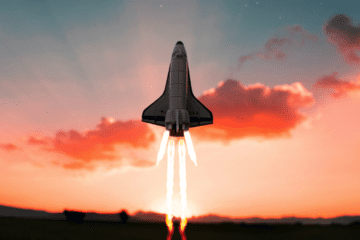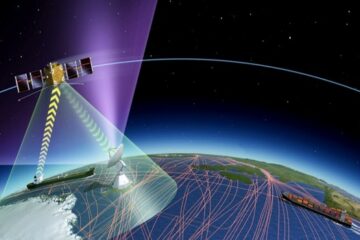Introduction
The International Space Station is a multinational project involving space agencies worldwide, which has existed for over two decades. Over the years, it has proven its usefulness, but what can we learn from the technology onboard to help us on Earth, and what are the benefits for humanity? Also, what does the future look like for the ISS and commercial space station?
What systems enable the ISS to operate in space?
The ISS needs systems to maintain the station’s integrity and maintenance for the astronauts’ safety and life. The central systems are the Environmental Control and Life Support system (ECLS), the Thermal Control system (TCS), the Space Communications and Navigation (SCaN), and the Computer and Data Management system.
The first two systems are pivotal to maintaining the ISS as a habitable and safe environment for the ISS crew. The Environmental Control and Life Support system, which comprehends the Oxygen Generator System (OGS), and the Water Recovery System (WRS), produces and replaces oxygen and recycles water onboard, allowing the ISS crew to live and work. Moreover, via both active and passive sources, the Thermal Control system (TCS) maintains an internal temperature between 18 and 26 degrees Celsius, depending on the location inside the ISS.

The Spaceborne Computer-2 in the ISS
The need for constant communication between the ISS and the ground represents a crucial point for continuing the research on the ISS. The ISS primarily communicates with the Earth via Tracking and Data Relay Satellites (TDRS), which consist of a series of satellites in geosynchronous orbit that guarantee continuous communication with the Earth. However, things could go wrong in space, so in the remote case of an emergency, the backup system is a VHF (Very-High Frequency) antenna that permits voice-only communication with the ground.
The main element that must be considered in communications with the Earth is the data rate, which is the number of bits conveyed or processed per unit of time. In 2019, the information between the ISS and the ground was around 600 megabits per second. So, to increase the pace with which that information could travel, a new technology called the Optical Payload for Lasercomm Science (LCRD) was developed, whose data rates exceed the one offered by the previous radio systems, enabling an efficient space-to-ground communication (about 10 to 100 times faster than the radio systems).
The Computer and Data Management system allows to organize and control all onboard systems. There are mainly four categories of computers on the ISS: Support, Vehicle Management, Telemetry, and Command Interface. While the last two categories are the ones that guarantee the integrity and maintenance of the station, the support computers are used for various management operations such as social media interactions and video conferencing.
At last, the ISS now has the new Spaceborne Computer-2 (SBC-2), a supercomputer that enables the ISS to be more independent from the ground than ever. This new space-made technology allows the ISS to rely on cloud computing and space-based processors to process data with powerful AI technologies onboard without sending information to the ground.
What does the ISS suggest about infrastructure?
How the natural environment and people coexist must be understood and addressed when designing any living quarter. This allows planners to anticipate how practical their structures will be, lowering costs, improving habitability, and avoiding risks. For instance, you may have noticed that Italian law prevents bathrooms from directly connecting to the kitchen. There is sound reasoning behind this: it avoids sanitary risks. A similar global approach has been adopted for the design of ISS. For this unique infrastructure, the organization is not based on Italian law but on the laws of Physics!
The cupola of the ISS is designed to avoid damage from mini meteorites.

This methodology has notably been applied to the windows of the ISS. The risk of damage from micro-meteorites sanding the glass means that large windows like the ones of the cupola require shielding when not in use. To regulate the closing mechanism, the dome provides an internal mechanical knob, which prompts the question: How can it be airtight on Earth? O-rings solve this issue: small rubber components are pressed against the slits by atmospheric pressure, sealing the cabin. The principle is simple and incredibly versatile, showing that some basic tenets of technology can still be applied to space infrastructure.
Despite using “earth solutions,” the cupola’s technical challenges affect what can be done in space. Indeed, the fact that space windows need heavy moving parts around them vastly limits their size. Consequently, the ISS doesn’t have giant windows surfaces to minimize maintenance costs. The question remains whether humans can adapt to live in windowless environments and if similar spaces would lead to changes in behavior. Will astronauts develop discomfort or agoraphobia?
We now have a new problem that is not technological but human. What may be the solution? We must shift our perspective to consider both technology and humanity. Humanity is a vital consideration of space infrastructure.
What does the future hold for spaceflight missions, and what does the ISS bring in the preparation of onboard crews?
The benefits of the ISS for crew missions range from analyzing spaceflight effects to optimizing the equipment on board. In particular, an application that has recently sparked attention is its future use as an analog for human exploration missions beyond Earth Orbit. The ISS provides an ideal opportunity to test the effects of spaceflight on the human body, which is crucial as astronauts will face long journeys. For this reason, all the contributing members of the ISS expeditions recognize this aspect as a strategic priority for all future crew missions and encourage the development of related experiences on the station.
Firstly, the ISS members are interested in implementing extended flights to analyze and better understand the effects of long-term spaceflight on the human body. The first and so far only such experiment was conducted in 2015-2016: two astronauts, Mark Kelly (NASA) and Mikhail Kornienko (Roscosmos), remained on the International Space Station for 340 days. They conducted almost 400 experiments to gain more knowledge on the effects of spaceflight on their bodies. To maximize the results obtained by this mission, Mark Kelly’s twin brother Mark remained on Earth during the mission to serve as an exact genetic basis for comparison at the end of the task. While this has been the only mission so far that has lasted this length, around 10 to 12 similar missions are planned in the near future.

An example of a medical experiment performed in the ISS.
Secondly, on-orbit medical activities and experiments are planned so that the astronauts can acquire more information about the spaceflight effects and prepare for any medical emergencies that may occur onboard. The activities include breath monitoring while air is pumped out of the ISS’s airlock and exercise experiments, which have aided in developing knowledge of spaceflight effects and managing the future impact back on Earth. Moreover, medical emergencies are also a reality that has to be factored into planning missions beyond the Earth Orbit by providing enough equipment and expertise to the crew to deal with these critical situations while being limited with what they can use. Given the future interplanetary missions, it will be even more crucial to have the proper supply without the possibility of restocking, contrary to what is currently happening on the ISS.
Finally, in preparations for crewed missions beyond the Earth Orbit, there is a delay in communication that must be factored in. For example, a simple one-way message sent from NASA Headquarters can reach the ISS in 0.001 seconds, while it would take 12.5 minutes to reach Mars. This delay can affect the dynamics of missions, especially in the case of an emergency, which is why agencies plan to mimic the future conditions on the ISS by purposely delaying communication times.
What could space stations be used for in the future?
So far, the ISS has served as humanity’s most sophisticated laboratory, capable of providing exceptional scientific and technical knowledge. However, as the station is approaching the end of its life, several companies have started to put forward their proposals for possible successors. Therefore, it seems that the next step in the space exploration journey is the creation of commercial space stations.
These will be privately owned space stations that allow commercial use; companies will be able to use them to provide a range of services to the public, such as space tourism, marketing opportunities, and research. Space hotels are expected to be commercialized by the end of the 2020s. Among the different players, Voyager Space announced it would work with Hilton on its Starlab commercial space station concept.
A vision of the Orbital Reef project.

Another company heavily interested in the commercial use of space is Axiom Space. The company already has an agreement with NASA to attach a segment of 3 modules to the ISS dedicated to research and space tourism. The first module could be launched as soon as 2024. In the future, these segments should detach from the mothership and become individual space stations, meaning that this new station could be one of the first successors of the ISS.
Blue Origin and Sierra Space announced they intend to collaborate on a “mixed-use business park” in the low earth orbit called Orbital Reef. According to the management, the project offers “unparalleled commerce, research, and tourism opportunities.” This space station aims to facilitate business and provide a destination where workers could spend months looking for the next breakthrough innovations in human health, telecommunications, computing, advanced materials, climate change reversal, and clean energy.
ESA and NASA both signed agreements supporting private space. In particular, NASA has already planned a collaboration with Motiv Space Systems on the On-orbit Servicing, Assembly, and Manufacturing (OSAM) missions. These missions involve using robotic technologies to repair components of satellites in orbit.
Finally, how can we benefit from the existence of the ISS?
ISS research and experiments greatly benefit human king on Earth. For example, scientists have developed and categorized over 2 million pictures of auroras, lightning, and cities through Machine Learning. These observations are vital to understanding how the various climates on different longitudinal areas of the Earth influence its habitats, allowing scientists to record what Earth looks like at specific times.

Astronaut performing DNA repair using the CRISP/CAS9 technology
On the ISS, experiments in microbiology are conducted. As a matter of fact, in 2016, the first DNA sequencing procedure was carried out in space. A technology called MinIon allowed them to read DNA bases in samples sent out to the station for study. In 2019, CRISPR was used for the very first time in space and allowed for studies of DNA repair in space.
Another example is medicine: protein alterations in our bodies are the leading cause of disease development. Crystallizing proteins is the best way to analyze their structure. Microgravity allows scientists to perform this method more efficiently and produce higher-quality crystallized proteins for Earth. It is vital as the protein’s ability to diffract X-rays enables to analyze and understand its structure accurately. These studies allowed scientists to develop drugs and treatments for common diseases such as tuberculosis, Duchenne muscular Dystrophy, and psychiatric disorders.
The ISS also contributed to several advancements in physics. Colloids (mixtures of tiny particles in a liquid that are very difficult to study on Earth due to gravity), reactors (which play a critical role in space exploration, as they provide for purification of water, air, and many more life-sustaining processes), and Computed Tomography scans (played a significant role in developing many new technologies, including x-ray communication, new X-ray fluorescence and diffraction instruments for materials science, low-dose x-rays which led to substantial medical breakthroughs) are just a few of the many fields of the study in which astronauts perform researches.
By Elena Kybett Vinci, Teodora Stefan, Elisa D’Errico, Francesco Lovati and Tebe Nigrelli.



0 Comments